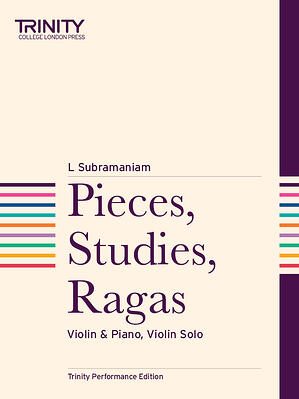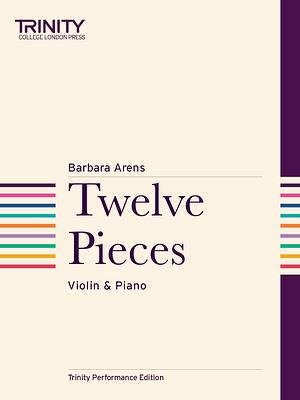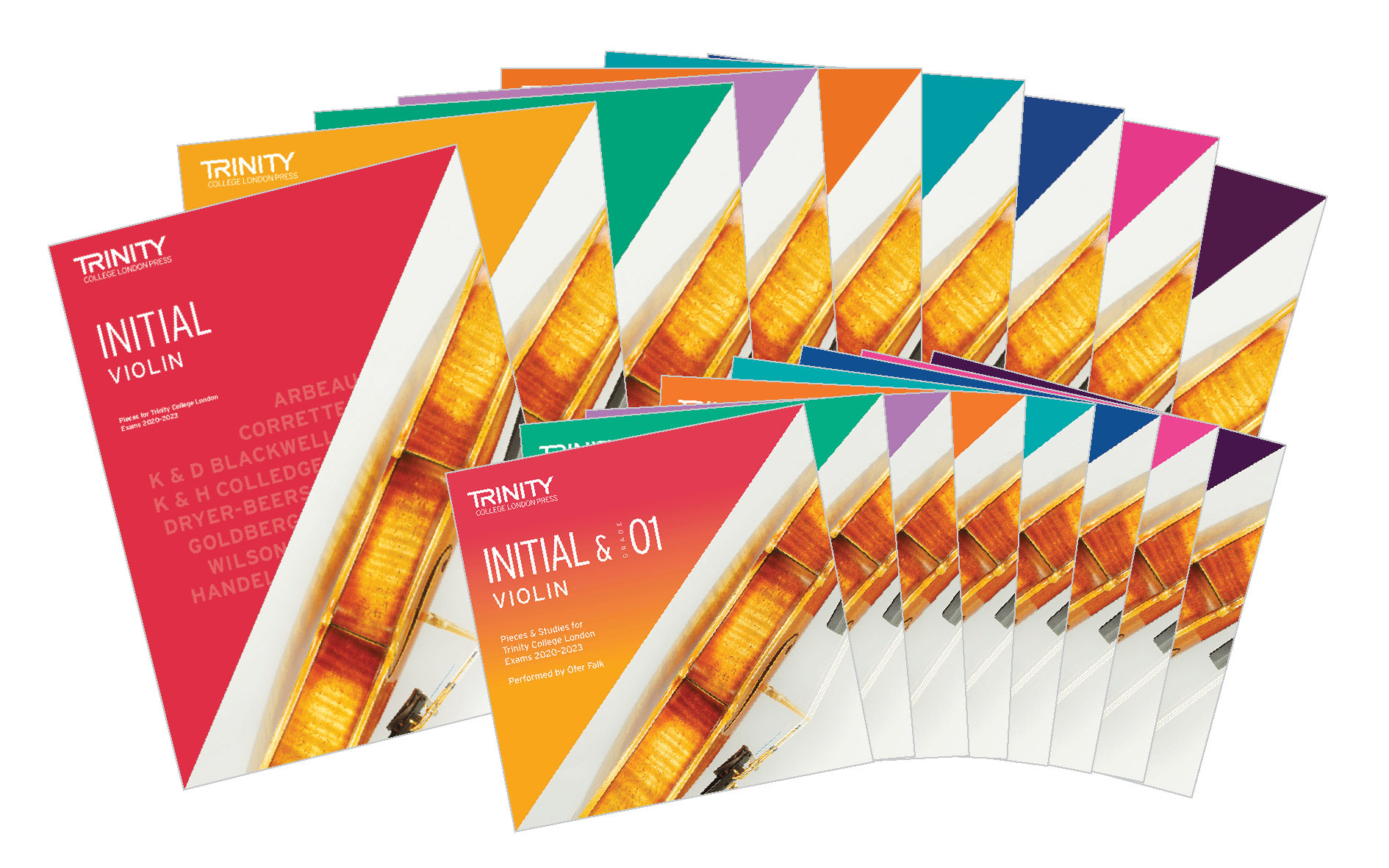L Subramaniam: Pieces, Studies, Ragas — Performance Notes

Performance notes
Blossom
‘Blossom’ is the title song of a crossover jazz album, which was recorded with legendary guitarist Larry Coryell. It has been transcribed for performance here.
Peace Anthem
This was originally an orchestral composition written and premiered as a tribute to Mahatma Gandhi on the International Day of Non-Violence. It was premiered in 2018 in Colombo with the Liepaja Symphony Orchestra. This arrangement has been made for violin and piano.
Illusion
This was originally recorded and released on the crossover album Conversation with legendary violinist Stéphane Grappelli. It has been transcribed for performance here.
Ballad
This ballad has changing time signatures 2/4, 3/4, 4/4, 5/4 and 6/4. Although the time signatures change, the entire composition is still played smoothly as a ballad. This composition was written while in a cabin near Trondheim, Norway.
Wavering Minds
In this composition, the piano plays 6/8 throughout. The violin solo part from bars 1–54 is in 6/8, and from figure A the violinist plays with the feeling of 3/4 against a 6/8 piano accompaniment. This gives a good introduction to the concept of polyrhythms.
Chasing the Field
This was originally written for violin and tuba and premiered with tuba virtuoso Øystein Baadsvik at the Lakshminarayana Global Music Festival. Here it has been transcribed for violin and piano. In bars 20–31 there is a ‘trade-off’ between the violin and piano, which is very common in Indian music. In the next section, both violin and piano play a trade-off in counterpoint together. Bar 41 returns to the original theme in a recapitulation, but with doubled notes.
Manodharma
Manodharma in Sanskrit means ‘improvisation’. This composition provides an introduction to improvisation by giving the soloist a few bars to improvise. After playing the composition a few times, it might become easier for you to improvise with similar motifs in the empty bars.
Kanda Nadai
This composition is in a 5/8 time signature. In Indian music, when there are five notes per beat, it is called kanda nadai. Originally written as a violin solo, this piece demonstrates the different possible groupings of five. The piano part was added later, introducing further syncopation and variation, but you can play the piece with or without accompaniment.
Watch Your Step
This composition is from an unreleased album and has been recorded with legendary jazz flautist Hubert Laws. It is based on the scale of a raga called Vachaspati, which is one of the 72 parent scales of Indian classical music. With D as tonic, the notes are D, E, F#, G#, A, B, C, both in ascending and descending. The tonic can be any note by transposing the whole scale and keeping the intervals the same.
Bars 27–98 are a ‘trade-off’ between violin and piano, getting longer and longer by adding one 16th note (semiquaver) each time, and then subsequently getting shorter by dropping notes. This will help you develop an ability to play difficult rhythmic and melodic figures in quick succession. Con slancio means ‘with enthusiasm’!
Rhythmic Explorations
This composition is in a time signature of 9/8. It gives an insight into playing polyrhythms. While the pianist plays nine eighth notes (quavers) per bar, the violinist plays different groupings of five, six, seven, and nine eighth notes.
Swan River
This composition was written in appreciation of the Swan River in Perth and is in three sections: bars 1–36, bars 37–72 and bars 73–107. In the first section, the violin plays dotted eighth notes (ie three-16th-note or -semiquaver groups) over the piano’s groups of four 16th notes in the right hand, in the time signature of 3/4, giving the feeling of four-against-three.
In the second section, the violin plays eighth notes (ie two-16th-note groups) against the piano’s semiquavers. In the third section, these two different rhythmic structures alternate with each two bars on the violin. This is a good study for learning to play polyrhythms.
Manodharma (solo)
See ‘Manodharma’ above.
Abogi
This is composition is based on a pentatonic scale called Abhogi, which is very common in Indian classical music. With D as tonic, the scale is D, E, F, G, B, D, both ascending and descending. This can be transposed to have any note as the tonic, with the relative intervals staying the same.
In the last three bars of this composition, the melodic motif is repeated three times (with a variation the last time). This is a common feature in Indian music.
While the melodic concept of raga is based on scales, it is not just about playing the notes of any given scale in order. There are specific primary notes for each raga, which are the most important notes, and secondary notes, which are also given importance. In addition to that there are ornaments (called gamakas) and typical phrases, which immediately make the raga identifiable for a familiar audience.
Dancing Cat no. 1
This composition uses the D natural minor scale, and must be played with a dancing feeling. In bar 13, a three-note rhythmic motif is introduced and played three times. The first time it is stated once, the second time it is stated twice, and the third time it is stated three times. This repetition structure is another common feature of Indian music.
Colourful
‘Colourful’ is an introduction to 6/8. In this composition, the first two bars are structured like a question, and the next two bars an answer. This same pattern continues for the next four bars with a fresh question and answer, repeated twice.
Little Woods
This composition introduces organised rhythmic syncopation. In the time signature of 4/4, it introduces different accents and groupings of eighth notes (quavers), creating a simple rhythmic pattern.
Squirrel
In this composition, the first two bars form a motif, which is repeated, and bars 5 and 6 present another motif, also repeated twice. The motif in bars 9 and 10 is a variation of the first motif and repeated twice. Next, the same sequence is repeated an octave higher with the notes being doubled. The composition ends with a four-note chord (including two open strings, G and D).
Sweet Seven
This composition introduces a 7/8 time signature. In Indian music, a seven-note-per-beat grouping is referred to as misra (seven) nadai (grouping). Learning this piece can help you learn to play and create your own variations of seven with different accents and slurs. This composition is based on a raga called Gaurimanohari, which has the intervals of an ascending melodic minor scale, but unlike the melodic minor, Gaurimanohari keeps the same notes when descending.
Bird and a Dog
This composition introduces 32nd notes (demisemiquavers). It is a conversation between a bird in demisemiquaver notes, and a dog in eighth notes (quavers).
Mahati Song
Written for the composer’s granddaughter, Mahati, this song is an introduction to the concept of theme and variation. Bars 17 and 18 are a simple rhythmic coda, which is turned upside-down in bars 19 and 20, and given a further variation in bars 21 and 22. This type of coda is also a feature of Indian classical music.
Neat Nine
This composition uses the time signature of 9/8, but with accents on different notes, creating shifting rhythmic groupings and syncopation. The piece ends with a rhythmic motif which increases in length with each bar, starting on the second main beat of bar 32.
Dancing Cat no. 2
This composition introduces more variations in 6. It builds on ‘Dancing Cat no. 1’.
Rhythmic Colours
This introduces different groupings and punctuation in the time signature of 6/8. Try to keep the eighth notes consistent as you accent off the main beat with the various syncopations.
Kanda, Tisra, Misra & Chatsura (Hide and Seek)
These exercises are written to improve familiarity with rhythmic patterns and variations. If you explore these exercises before playing compositions with similar time signatures, you may find those time signatures easier to play.
Raga scales
There are six scale patterns given, with G, C, D, E, and A as tonics. This will help you get used to the scales with unusual intervals, both by listening to the sounds of the scales and by physically feeling and understanding the space between fingers. This can give you a higher level of control when playing chromatic passages and improve your tuning, especially in some of the more challenging pieces.
Performance notes by L Subramaniam


